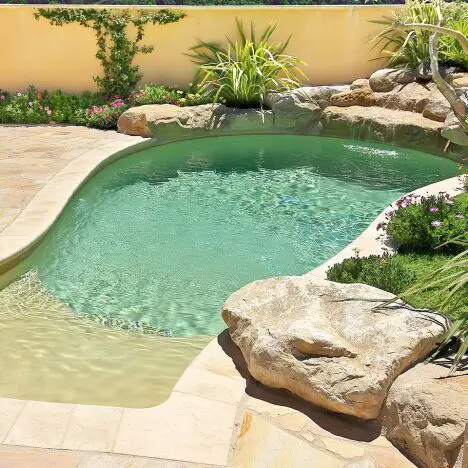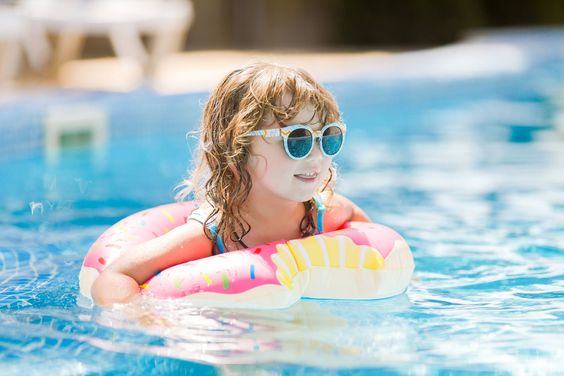Having a swimming pool in the backyard is a treat. But most owners do not understand that maintaining it is a nightmare.
In addition to keeping the chlorine level in your water safe, you need to make sure that the water is free of turbidity and clear.
If you notice the pool filters seem to have calcium deposits or the water is slightly cloudy, your pool may have a high level of alkalinity.
We’ll cover all factors related to alkalinity in the pool through this article. In addition, it includes “How to lower alkalinity in a pool.”
So, let’s get into the details!
How To Lower Alkalinity In A Pool?
The following is a detailed guide in reducing the alkalinity level in your pool.
What You Will Need
- Accurate Test Kit
You will need to prepare an accurate test kit for this project. The higher the accuracy of your test kit, the better your results. Unfortunately, many of the test kits available on the market are inaccurate, making this task more challenging.
We recommend using the LaMotte ColorQ Pro 11 test kit for this process. Besides, Taylor or Lamotte Total test kits also work well.
- Muriatic Acid
The key to this project is to use a strong acid such as sulfuric acid, muriatic acid, or sodium bisulfate. These acids all work well.
We recommend you utilize muriatic acid (also known as hydrochloric acid) because, in our opinion, it works best for this project. It’s alright to take sodium bisulfate. Yet, we do not think it’s as good as muriatic.
When handing with acids or any chemicals, it is essential to wear protective clothing, including gloves, goggles, and long sleeves.
- Aeration
Aeration isn’t a chemical or a tool. Instead, it is known to be a method that increases the pH level.
After you add strong acid to the water, like muriatic acid, the pH level in the water can drop. So it is essential to apply aeration to boost the pH level without using a pH enhancer, which increases the alkalinity again.
Ideal pH And TA Levels
You need to try to achieve a target TA of 100 ppm. TA should range from 80 to 120 ppm. The ideal pH level you need to achieve should be ranger from 7.4 to 7.6.
A Detailed Guide
Step 1: Accurate Determination of TA and pH
Use the test kit we recommend above to determine pH and TA levels in your pool water. For instance, the TA you get is 280 ppm, and the PHA reads 8.3.
Step 3: Identify The Ideal Value for the Alkalinity Level
Adding acid will lower pH and TA levels. In our opinion, the target TA should range from 80 to 120 ppm, and the ideal pH level should be somewhere between 7.4 and 7.6.
It is wise to utilize the pool calculator to estimate the ideal muriatic acid amount you should use to reach the target TA value, such as 100 ppm.
It would be best to focus more on the total alkalinity than the pH for this step. It would be best if you made an effort to reduce the TA to the recommended level. Then you can increase the pH to the recommended level by aerating.
Step 4: Dilute your Muriatic acid and mix it in water
For example, the amount of water in your pool is twenty thousand gallons. Thus, adding about 2 liters of muriatic acid is necessary to achieve 100 ppm – the target TA value.
We recommend slowly distributing your muriatic acid solution around your pool while pumps operate for the best results.
It is okay to pour acid in one place. However, you need to do it carefully to avoid damaging parts of the pool.
Aeration should begin after adding muriatic acid, and the TA level has dropped. Then, the aeration procedure will grow the pH level until the target level is reached.
Step 5: Check Out the Ph and TA After Six Hours
It is best to test the pH every six hours until you notice it has reached the recommended level. If the pH is in the correct range after using the acid, you are successful. This effort lets you know if you need to improve the pH or TA reduction.
Step 6: Retake Water Test After 24 Hours
After 24 hours since you took the test in step 5, use your test kit to retake readings. This step is also to make sure that everything goes smoothly.
Step 7: Make a Final Check After 48 Hours
After 48 hours from completing step 5, you should recheck the pH and TA levels.
What Is Alkalinity In Water?

Alkaline substances are present in all water. Within the 7.2-7.8 pH range, alkalinity exists as a bicarbonate material. Thus, TA is a measure of the buffering ability of water.
The recommended alkalinity level for swimming pools water ranges is between 80 and 120 ppm.
Why Do You Need To Lower Your Alkalinity?
Too high TA levels in swimming pools can lead to problems. For instance, it can lead to an unbalanced pH level that increases calcium levels.
As a result, it can cause cloudy water, scale, and clogged filters. In addition, it can cause itchy eyes and skin for swimmers!
What Causes High Alkalinity in Water?
One of the main reasons the TA is so high is that you added too much sodium bicarbonate (baking salt) to raise the pH.
Another factor that often leads to an increase in TA is your water source. So, the best thing is to make a quick call to a water company, and they will help you determine the right chemical to keep the water in balance.
Frequently Asked Questions
1. How do you lower alkalinity without affecting the pH level?
It is not an easy thing. But, fortunately, it is possible. Here is how.
- Turn on all of your jets and air features, keep them on the entire process.
- Determine how much you want to lower your TA and how much acid is needed to lower it.
- Add half of the remaining acid you need to add to the pool.
- Add half of the amount of the remaining acid you need to add to the pool.
- Aerate for half a minute, and check the pH and TA:
- If your TA > recommended level and pH > 7.8, go back to step 2.
- If TA > recommended level and pH is < 7.6, go to step 4 again.
- If TA = Target and pH is > 7.8. You need to lower TA and go to step 2.
- Aerate for half a minute, and check the pH and TA.
- If your TA > recommended level and pH > 7.8, go back to step 2.
- If TA > recommended level and pH is < 7.6, go to step 4 again.
- If TA = Target and pH is > 7.8. You need to lower TA and go to step 2.
2. Can you swim in a pool with high alkalinity?
A pool with high total alkalinity is still safe to swim in, as long as you have enough chlorine in your pool and a balanced pH level (7.4 to 7.8).
In essence, high alkalinity does not directly create an unsafe swimming situation. It just causes some problems, such as:
- Cloudy water
- Reducing the effectiveness of chlorine
- Unstable pH level
3. Can you use baking soda to lower alkalinity?
Sodium bicarbonate, as known as baking soda, is a chemical. It can raise the pH.
Some sites on the Internet believe that this is a pretty effective way to raise the pH. However, we do not recommend doing so.
The reason is that baking soda will increase the alkalinity in the water to abnormal levels, leading to an uncontrolled increase in pH.
4. How to Lower PH With Muriatic Acid?
Here’s a quick run-down on how it works:
- Turn off the pump and wait 1 hour.
- Use a test kit to determine the pH and TA of the levels.
- Determine how much acid you need to add to achieve the recommended TA level.
- Dilute your muriatic acid and use it according to the manufacturer’s instructions to reduce TA.
- Recheck pH and TA.
The Bottom Line
Reducing the alkalinity level is essential to protect your pool against scales. However, when talking about “how to lower alkalinity in a pool,” you will have to use the measurements and use acids carefully.
We recommend a muriatic acid solution to protect your pool and the equipment from damage caused by highly alkaline water. Please do the calculations correctly and then use aeration. Your pool will regain its polished appearance.
Please share this article with other people. Thank you for reading!



